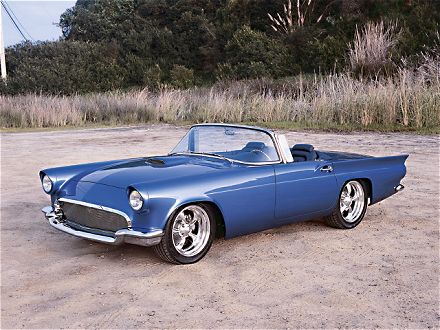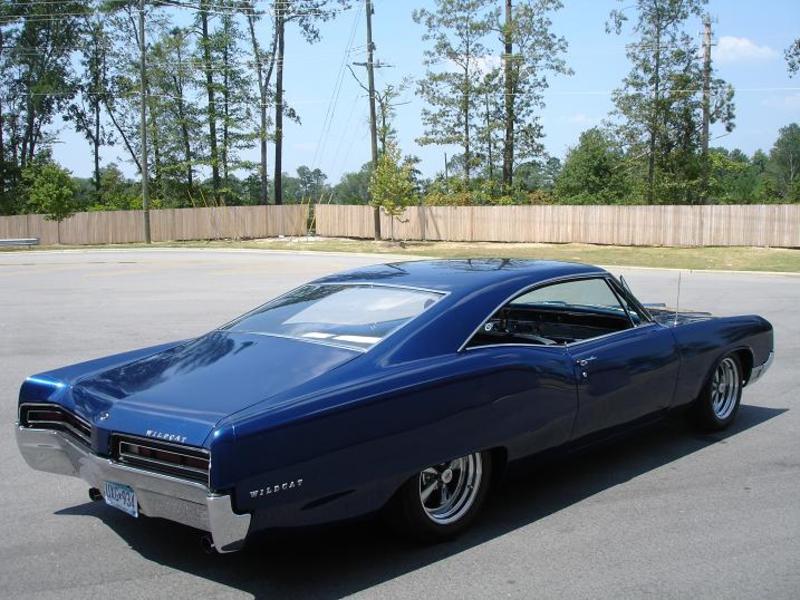This is a dam good thread. That explanation will start to fire some neurons.
regards

Posted 24 March 2015 - 12:46 AM
This is a dam good thread. That explanation will start to fire some neurons.
regards
Posted 24 March 2015 - 05:05 AM
When I was porting my head I thought the same way. Without the valve I could insert a straight piece of wire and 'see' the apex on the short turn. This is what I removed... to a degree. Not knowing how much metal was there I erred on the side of not f*#king it up!
Posted 24 March 2015 - 04:41 PM
Something else i just found out ? ,when looking at an 8 port head, (a real engine 12 port may be similar?) ,when we look into the port,on the "port divider" side we see that the side that is on the shrouded area of the valve is shaped a bit like a wing, along to some degree with the floor with it's short turn radius , seems like it might tend to stream to "one corner" for some reason then "hit" the back of the valve and do some fancy foot work while going in to the pot.
Edited by EunUCh, 24 March 2015 - 04:42 PM.
Posted 24 March 2015 - 07:23 PM
I wonder if some suitable music would help our lovely air/fuel particles complete this dance?
And i wonder what genre that would be.....IM thinking dubstep.....Problem with that is you gotta wait for the drop before you can floor it ![]()
Cheers.
Posted 24 March 2015 - 08:11 PM
I wonder if some suitable music would help our lovely air/fuel particles complete this dance?
And i wonder what genre that would be.....IM thinking dubstep.....Problem with that is you gotta wait for the drop before you can floor it
Cheers.
Dubstep my arse. Apologies to the Ford haters but I love this and I love those cars...
Posted 24 March 2015 - 08:15 PM
frOcking ugly cars sadly.
Song does make my hips jig though, suppose it would do the same to the air/fuel molecules?
Posted 24 March 2015 - 08:19 PM
Posted 24 March 2015 - 08:21 PM
![]()
![]()
![]()
Posted 24 March 2015 - 08:41 PM
What
The
Actual
frOck
Did i just listen to?
Now i know how you old Cunning Stunts feel listening to modern music...I think?
Doubt that song would work, it would just make them want to march is a nice orderly fashion into the chamber...to slow....
I still think some nice dubstep would be good, though im starting to think it might just confuse our poor molecules more once the drop hits....
And like i said, you have to actually wait for the drop...fairly long warm up period.....EG:
Owabout some hiphop? Makes my head bop, might make them bop around the corners?
Atleast theres a Torana on the album cover....
Think thats enough sillyness....
Posted 24 March 2015 - 08:53 PM
frOcking ugly cars sadly.
Ugly??????????????????? One of these stuffed with big-block goodness is my dream car...

Edited by oldjohnno, 24 March 2015 - 08:54 PM.
Posted 24 March 2015 - 09:08 PM
Yeah pretty frOcking hideous compared to my dream car...

Factory big block goodness ![]()
Edited by Bomber Watson, 24 March 2015 - 09:09 PM.
Posted 24 March 2015 - 09:19 PM
Dammit now I've got two dream cars...
Posted 24 March 2015 - 09:24 PM
Luckily for my (and now your) wallet the 67 (that one) is rare as frOck even in the US.....
Posted 24 March 2015 - 11:21 PM
Well if were gonna mix music and air speed, I've mucked around with a step made out of of blue tac into my Otto Link 7 Star metal Tenor Sax mouthpiece, makes a cool difference. The air is commpressed as it enters the mouthpiece, really seems to spark things up. Done the same to the Baratone and the Soprano but the Alto which I have not even touched will really screem when I do. I've allways liked the tenor Sax solos in Bob Segar's band.
regards
Posted 24 March 2015 - 11:25 PM
A Black XA Coupe with a 429 Boss 'shotgun' and of course, a bull nosed toploader would turn my dreams wet.
Regards
Posted 25 March 2015 - 06:44 AM
Something else i just found out ? ,when looking at an 8 port head, (a real engine 12 port may be similar?) ,when we look into the port,on the "port divider" side we see that the side that is on the shrouded area of the valve is shaped a bit like a wing, along to some degree with the floor with it's short turn radius , seems like it might tend to stream to "one corner" for some reason then "hit" the back of the valve and do some fancy foot work while going in to the pot.
You're right, the flow is - intentionally I presume - biased to create swirl. This is pretty typical for any two valve engine apart from the really early designs and the swirl really helps combustion efficiency. Smoothness and driveability are improved, spark advance requirement and fuel consumption are reduced. Some of the later versions of the SBC had very pronounced swirl inducing features in the intake bowl, I guess to enable the old engine to comply with stricter emission regulations.
This poses a bit of a dilemma for guys like us though - swirl is a good thing for a street car, especially at lower rpms, but it doesn't do anything for bulk flow and with our old-style ports we just have to take whatever flow we can get, regardless of its effect on swirl. There's generally enough turbulence in the cylinder at high rpms that we don't need swirl, so we just port for maximum flow and accept that we're gonna need more spark lead at low rpms.
Well if were gonna mix music and air speed, I've mucked around with a step made out of of blue tac into my Otto Link 7 Star metal Tenor Sax mouthpiece, makes a cool difference. The air is commpressed as it enters the mouthpiece, really seems to spark things up. Done the same to the Baratone and the Soprano but the Alto which I have not even touched will really screem when I do. I've allways liked the tenor Sax solos in Bob Segar's band.
regards
A lump ported sax mouthpiece. I'm impressed.
Posted 25 March 2015 - 05:01 PM
Air speed in sloooow mo.
would be nice to able to "see" what is going in there with gear like this ?
you can also google sonic boom of jet planes close to water,incredible stuff?
dare i say it ![]() ...an engine should "sing" when sort of "tuned" or not ?
...an engine should "sing" when sort of "tuned" or not ?
just as an example...one of the local stock car boys was running a blue 202 , now, this bloke just put them together as cheap as possible
with no major modifications other than a bit of a solid cam/3 Delorto's ,extractors and who knows what in the port department if any?,he is well known for being a "tester" of engines..i.e ,stand on it hard and make the right boot do isometric exercises on the floor pan to get more and see what happens.
This thing would "sing" a tune up high,he was giving the $10k 351 a run and probably would have taken the night but the second hand
head gasket let go.
Posted 25 March 2015 - 05:42 PM
couldn't we just use the hedron collider to sort this issue out, I'm sure the boys there would be happy to run a few test even if it is with music ?
the torana big bang
Edited by Agent 34, 25 March 2015 - 05:44 PM.
Posted 26 March 2015 - 07:31 AM
Air speed in sloooow mo.
would be nice to able to "see" what is going in there with gear like this ?
you can also google sonic boom of jet planes close to water,incredible stuff?
dare i say it
...an engine should "sing" when sort of "tuned" or not ?
You can see what's going on, using CFD generated diagrams that are much clearer and give much more information than any Schlieren photo can.
An engine certainly does sing, especially one designed using resonant tracts to make the most from pressure wave activity. This is a separate subject altogether to flow and velocity, but as the level of tune increases the effective rpm range narrows to the point where the engine can only sing one note, but very bloody loudly. This was evident in the sound of the old N/A Formula 1 cars or the older, small displacement GP bikes that needed 14 gear ratios to keep them "on the pipe".
Kevin Cameron wrote of the Honda NSR500 in his wonderful book Classic Motorcycle Race Engines "How does a tiny bird make itself heard over great distance? By putting all its energy into generating an intense, single frequency tone. In similar fashion an engine's power is focused to an ever narrower, higher maximum."
Edited by oldjohnno, 26 March 2015 - 07:31 AM.
Posted 26 March 2015 - 05:05 PM
Will spend a bit more time looking at the CFD stuff,found a bit, but must be more out there.
So if we are looking at the attributes of the way the port/valve/chamber play a role,even though the "wing" and short turn radius do
some good,what would we expect to see at the higher rpm end of things when the air can no longer stay attached to the radius of the short turn, but on the wall with the wing shape things stay a bit cleaner,there must be some transition of where things change as the volume/speed increases and change the way the the air flows not only in the port but through the throat and over the back of the valve?
Posted 26 March 2015 - 05:55 PM
Small ports for Low rpm, and big ports for High rpm.
Posted 26 March 2015 - 06:17 PM
Interesting,some say that evaporating fuel in a warm intake runner will tend to take up more space but result in a more "gaseous" mix
resulting in a "cleaner" burn which is good for emissions,on the other hand , a cool dense smooth mix in the runner with minimal "fuel drop out" that then "sees" a hot valve/chamber will result in the expansion of the fuel into a vapor in the cylinder thus aiding in a mix that takes up more space aiding in the 'volume" of the mix expanding in the chamber which in turn "boosts" compression/power and result in just as good emissions but with more power?
Heard a story that said fuel when it is evaporating in a hot environment will take up nearly 10 times the amount of space of that of which
it was a cool mix...don't quote me on that ...was just pub talk.
Posted 26 March 2015 - 07:16 PM
I think manifold heat is far from any concerning factor. Unless we are talking extremes not experienced in normal conditions.
The intake, in a N/A engine, operates under vacuum, this Vacuum better allows the fuel vaporize, the lack of vacuum, in a big runner, big carbed engine, down low, out of its power band, is unable to hold the fuel in suspension where it can condense on the port and runner walls.
You only have to study a vacuum gauge in relation to throttle openings vrs RPM/engine load to understand how important vacuum is in a N/A engine.
Posted 27 March 2015 - 07:16 AM
Interesting,some say that evaporating fuel in a warm intake runner will tend to take up more space but result in a more "gaseous" mix
resulting in a "cleaner" burn which is good for emissions,on the other hand , a cool dense smooth mix in the runner with minimal "fuel drop out" that then "sees" a hot valve/chamber will result in the expansion of the fuel into a vapor in the cylinder thus aiding in a mix that takes up more space aiding in the 'volume" of the mix expanding in the chamber which in turn "boosts" compression/power and result in just as good emissions but with more power?
Heard a story that said fuel when it is evaporating in a hot environment will take up nearly 10 times the amount of space of that of which
it was a cool mix...don't quote me on that ...was just pub talk.
Actually petrol vapour has about 160 times the volume of liquid. If you know the A/F ratio and the SG of the fuel then you can easily calculate how much air will be displaced by the vapour.
Where is the best place for vaporisation to take place? That depends mainly on the engines breathing capacity. If it has an excess of flow capacity then it can be an advantage to vaporise as early as possible in the intake tract. Very well breathing engines can make use of showerhead injectors above the bellmouths to cool the charge and ingest more air. But if it's an old, breathing-limited engine you'll make more power by pouring in the fuel and letting it vapourise in the cylinder.
0 members, 1 guests, 0 anonymous users